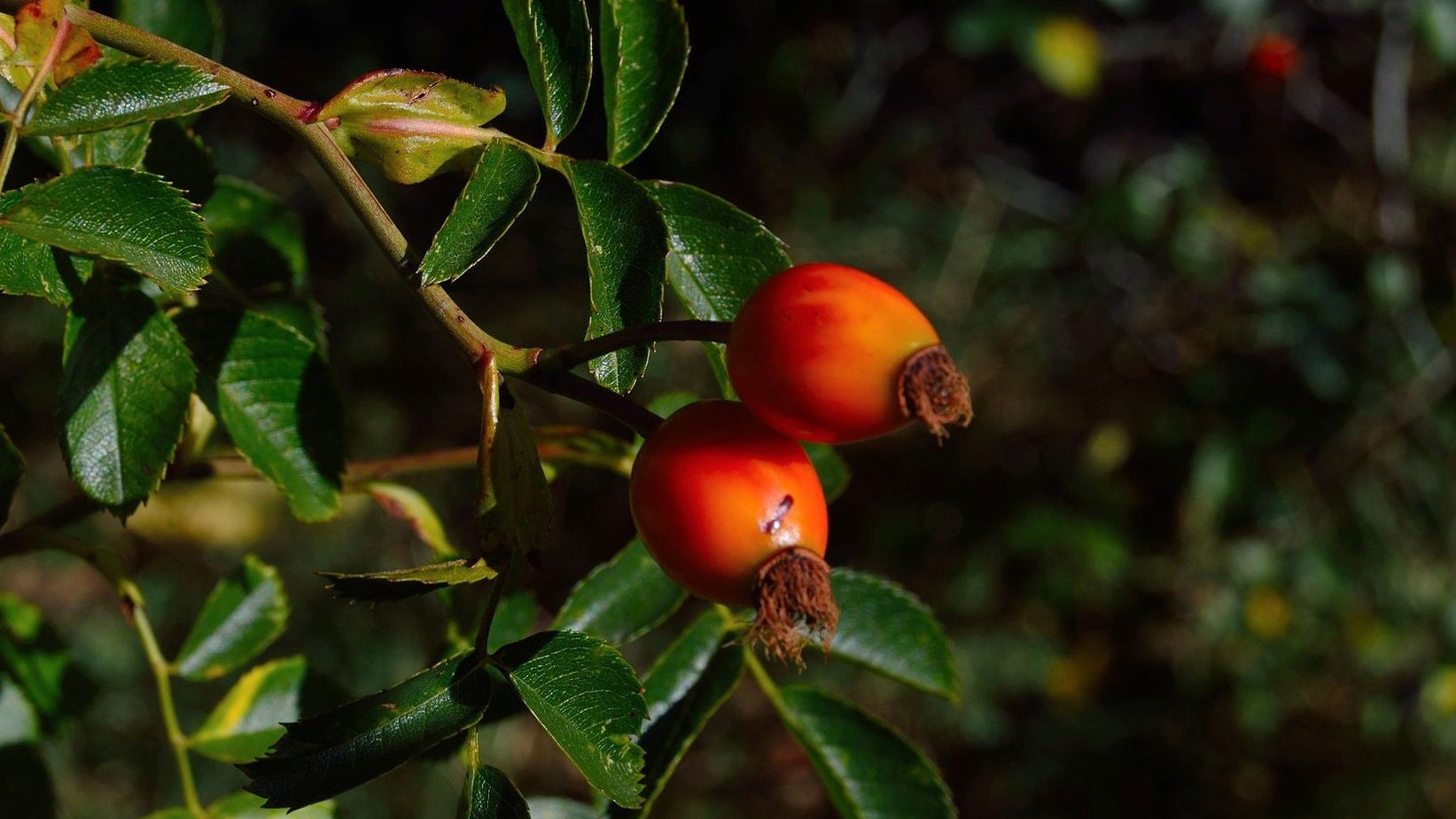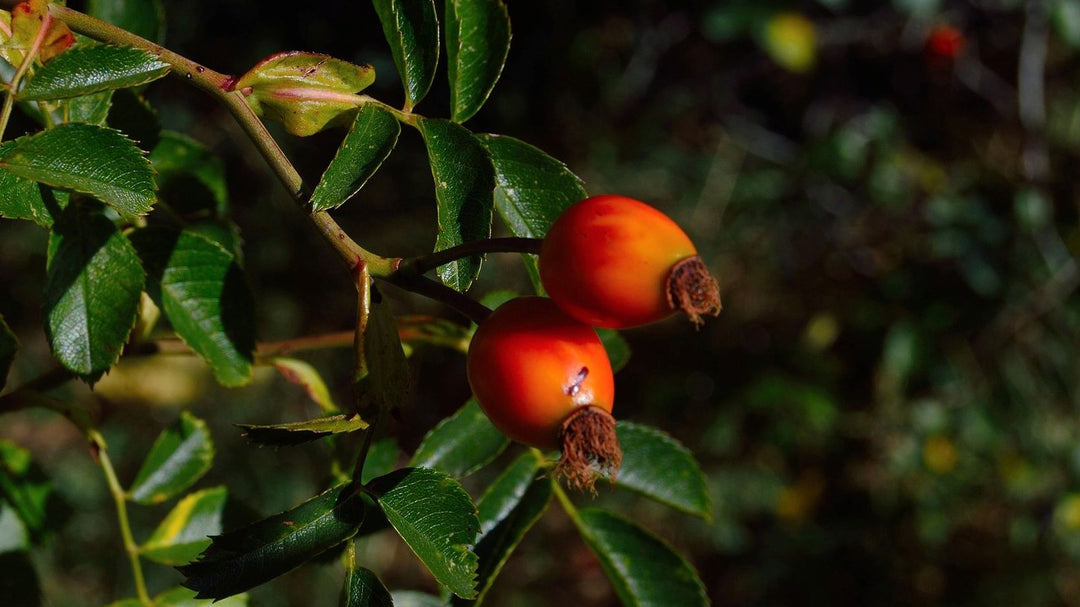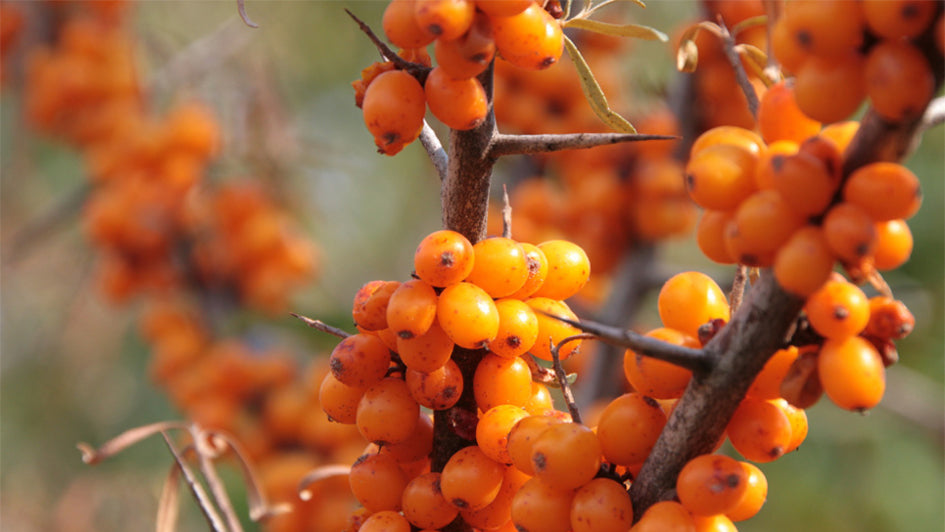The goji berry (lycium barbarum), also known as wolfberry, is a bright red fruit plucked from trees. With its superfood status, they are a well-known staple of diets both ancient and modern, consumed readily in its raw and dried form. They pack a distinctively sweet and tangy flavor with amazing nutrients to boot.
Asian traditions
Goji berry has been used for thousands of years in ancient Asian medicine and recipes used for food and drinks – tea, soup, juice, vinegar and wines, and more. Their benefits to organs such as the eyes, brain, liver, kidney was well understood even before science isolated the specific components responsible for them. They were even believed to increase longevity!
Sustainable farming
Like sea buckthorn, we source our goji berries from the same Tibetan farm. Being indigenous to Asia, the Tibetan Plateau also turned out to possess the most ideal growing conditions for this fruit, from the high 3,000 meters altitude, to the abundant sunlight and lack of human pollution. Our farm engages in sustainable and ethical processes, so on top of ensuring that the environment does not become compromised during harvest, the local community of Tibetans will also be able to secure their livelihoods through farming work. We're committed to preserving the environment while delivering quality skincare products to our consumers.
Science-backed benefits
As a super fruit, goji berry contains powerful antioxidant compounds with a variety of additional skin beneficial properties:
Beta-carotene (Vitamin A)
A kind of carotenoid responsible for the fruit’s distinct pigment. Our body converts beta-carotene to retinol, the useful form of Vitamin A that improves skin’s ability to retain water, and transforming skin from thin and saggy to plump and firm.
Zeaxanthin (Vitamin A)
Another carotenoid, zeaxanthin is known to be important for retinal health. For our skin, this phytochemical is especially effective at reducing inflammation from UVB rays and drastically improving skin tone.
Ascorbic acid (Vitamin C)
Vitamin C is best for collagen and elastin stimulation, making it the best at repairing surface-level physical imperfections, healing acne scars and helping a smoother facial complexion.
Palmitic acid
Palmitic acid is the most abundant saturated fatty acid in the human body. It has the ability to reinforce the lipid bilayer of our skins and thus strengthen our natural defense system against harmful pathogens.
Linoleic acid (Omega-6)
One of the most important essential fatty acids for the body. Linoleic acid stimulates natural sebaceous gland production, which helps unclog pores in oily and acne-prone skin.
Oleic acid (Omega-9)
By enhancing skin permeability, omega-9 acid improves the delivery of bioactive ingredients into cells. They’re also great at treating inflammation, reducing redness and evening out skin tone in the process.
The synergy of these compounds in skincare products heightens their overall hydrating, antioxidant and anti-aging benefits. Select from the products below to sample the wonderful properties of goji berry for yourself!
Sources:
- Kafi, R., Kwak, H. S., Schumacher, W. E., Cho, S., Hanft, V. N., Hamilton, T. A., . . . Kang, S. (2007). Improvement of Naturally Aged Skin With Vitamin A (Retinol). Archives of Dermatology,143(5). doi:10.1001/archderm.143.5.606
- Ma, Z. F., Zhang, H., Teh, S. S., Wang, C. W., Zhang, Y., Hayford, F., . . . Zhu, Y. (2019). Goji Berries as a Potential Natural Antioxidant Medicine: An Insight into Their Molecular Mechanisms of Action. Oxidative Medicine and Cellular Longevity,2019, 1-9. doi:10.1155/2019/2437397
- Mao-Qiang, M., Feingold, K. R., Thornfeldt, C. R., & Elias, P. M. (1996). Optimization of Physiological Lipid Mixtures for Barrier Repair. Journal of Investigative Dermatology,106(5), 1096-1101. doi:10.1111/1523-1747.ep12340135
- Naik, A., Pechtold, L. A., Potts, R. O., & Guy, R. H. (1995). Mechanism of oleic acid-induced skin penetration enhancement in vivo in humans. Journal of Controlled Release,37(3), 299-306. doi:10.1016/0168-3659(95)00088-7
- Palmitic Acid. (2018, September 20). Retrieved June 18, 2019, from https://thedermreview.com/palmitic-acid/
- Zielińska, A., & Nowak, I. (2017). Abundance of active ingredients in sea-buckthorn oil. Lipids in Health and Disease,16(1). doi:10.1186/s12944-017-0469-7





